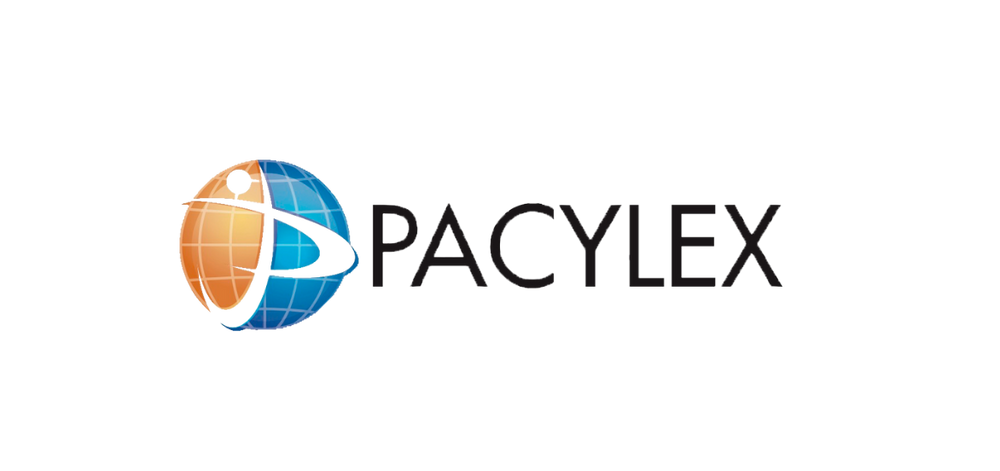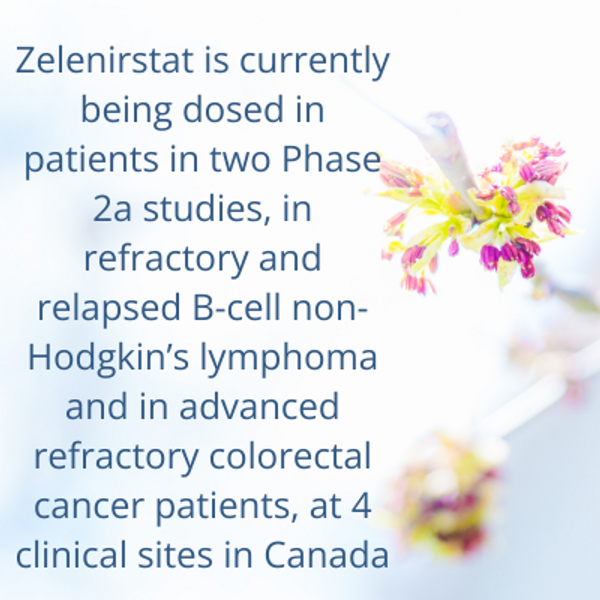Edmonton, Alberta, Canada May 8, 2024. Pacylex Pharmaceuticals Inc. (Pacylex) is a clinical-stage pharmaceutical company developing N-myristoyltransferase (NMT) inhibitors as targeted therapies for the treatment of hematologic cancers and solid tumors. Today Pacylex announced the publication of a new study in the Journal of Translational Medicine, "Multiomics analysis identifies oxidative phosphorylation as a cancer vulnerability arising from myristoylation inhibition," describing how NMT inhibition by zelenirstat affects cancer cells, with broad implications for multiple liquid and solid tumor cancers.
In order to understand how zelenirstat kills cancer cells, Pacylex researchers used mass spectrometry to identify the proteins most affected by zelenirstat treatment. They discovered that NDUFAF4, a protein essential for mitochondrial energy production from oxygen (oxidative phosphorylation), was the most severely affected of all. Inhibiting myristoylation of NDUFAF4 shut down oxidative phosphorylation in cancer cells. The study also produced an in vitro myristoylation inhibition sensitivity signature comprising 54 genes (MISS-54) enriched in hematologic cancers as well as testis, brain, lung, ovary, and colon cancers.
“The ability of a myristoylation inhibitor to limit oxidative phosphorylation and also inhibit cancer cell signaling appears to explain how zelenirstat selectively kills cancer cells, especially those with high MISS-54 scores,” said Dr. Luc Berthiaume, CSO of Pacylex Pharmaceuticals. “Since normal cells readily use other non-oxidative metabolic processes to produce energy, while many types of cancer cells including relapse causing cancer stem cells cannot, zelenristat could lead to more tolerable and durable cancer treatments.”
“This new mechanism of action may explain why zelenirstat treatment shows activity across multiple patients with unrelated cancers. The phase I population was an unselected group that had no remaining standard therapy options, yet zelenirstat therapy produced prolonged stable disease or better in 57% of the patients receiving the recommended Phase 2 dose,” said Dr. John Mackey, CMO of Pacylex Pharmaceuticals.
Zelenirstat is currently being dosed in patients in two Phase 2a studies, in refractory and relapsed B-cell non-Hodgkin’s lymphoma and in advanced refractory colorectal cancer patients, at 4 clinical sites in Canada.
For additional information, please visit www.pacylex.com.
Pacylex Pharmaceuticals Contact: Michael J. Weickert
CEO, Pacylex Pharmaceuticals, Inc.
E: michael.weickert@pacylex.com
P: 650-218-1840
Twitter @Pacylex (https://twitter.com/pacylex)
LinkedIn (www.linkedin.com/company/pacylex-pharma)
Facebook (https://www.facebook.com/pacylex)
About zelenirstat (PCLX-001)
Zelenirstat (formerly identified as PCLX-001) is a first-in-class, oral, small molecule NMTi being developed to treat patients with leukemia, lymphoma, and solid tumors. Zelenirstat selectively killed cancer cells in vitro and in animal models has been shown to regress hematologic malignancies and inhibit the growth of lung and breast cancer tumors. In AML models, zelenirstat preferentially killed leukemic stem enriched cell populations and allowed the regeneration and growth of normal bone marrow cells.
About zelenirstat Phase 1 and 2 studies
Pacylex completed the dose escalation phase of a Phase 1 multiple ascending dose safety, tolerability, and pharmacokinetics study on zelenirstat in people with relapsed/refractory lymphoma and refractory solid tumors (NCT04836195). A recommended Phase 2 dose was determined. Zelenirstat demonstrated an acceptable safety and tolerability profile, pharmacokinetics consistent with once daily oral dosing, and early signs of efficacy.
Zelenirstat is currently being studied in a Phase 2a open-label study designed to evaluate the safety, tolerability, pharmacokinetics, pharmacodynamics, and clinical activity of zelenirstat in patients with relapsed/refractory B-cell non-Hodgkin Lymphoma (NHL) and a separate Phase 2a cohort in patients with refractory metastatic colorectal cancer that has progressed despite all available standard therapies.
About Pacylex Pharmaceuticals
Pacylex is a clinical-stage pharmaceutical company headquartered in Edmonton, Alberta, Canada, targeting hematologic and solid cancers with orally bioavailable NMT inhibitors. Zelenirstat is the lead drug in a new class of NMT inhibitors, enabling Pacylex to exploit NMTs as new clinical targets for cancer treatment. Pacylex is conducting two multi-center Phase 2a studies in Canada in patients with relapsed/refractory NHL and refractory metastatic colorectal cancer. The IND for a Phase 1 multiple ascending dose study in acute myeloid leukemia (AML) has been cleared and the FDA has granted zelenirstat both Orphan Drug Designation and Fast Track Designation for AML. The US Department of Defense is supporting the initial clinical investigation of zelenirstat in patients with AML. The Cure Cancer Foundation supported initial clinical studies through its World’s Longest Games.
Forward-Looking Statements
This press release contains forward-looking statements and forward-looking information within the meaning of applicable securities laws, such as statements relating to future events or the Company’s future financial and operating performance, as well as the Company’s business plans, growth initiatives, and objectives and prospects. Generally, forward-looking statements and forward-looking information may be identified by the use of forward-looking terminology, including the words “believe,” “may,” “will,” “estimate,” “continue,” “anticipate,” “intend,” “should,” “plan,” “goal,” “expect,” “strategy,” “future,” “likely,” "proposed,” “scheduled,” “forecast,” “budget,” “could,” “would,” variations of such words of phrases and other similar expressions, or by the use of words or phrases which state that certain actions, events or results may, could, would, or might occur or be achieved. However, the absence of these words does not mean that a statement is not forward looking. Forward-looking statements and forward-looking information are subject to numerous factors, risks and uncertainties that could cause actual results to differ materially, including, but not limited to, the Company’s ability to successfully execute on its business plans and strategies, avoid delays in planned clinical trials, hire and retain key personnel, obtain appropriate or necessary governmental approvals to market potential products and obtain future funding for product development and working capital on commercially reasonable terms, changes in laws, and general macroeconomic conditions, including economic slowdowns, recessionary risks, rising inflation and interest rates, and supply chain disruptions. Forward-looking statements and forward-looking information are based on the beliefs of management as well as assumptions made by and information currently available to management as of the date hereof, and none of the Company or its affiliates undertakes any obligation to update or issue revisions to any forward-looking statements or forward-looking information contained herein to reflect any future events or circumstances, except as required by law. The foregoing does not constitute an offer or solicitation to acquire any securities in the Company or any related or associated entity or affiliate. The information contained herein is not intended as legal, tax, financial or investment advice. Furthermore, the information contained herein may not be applicable to or suitable for an individual’s specific circumstances or needs.








